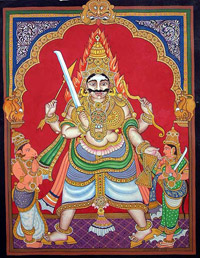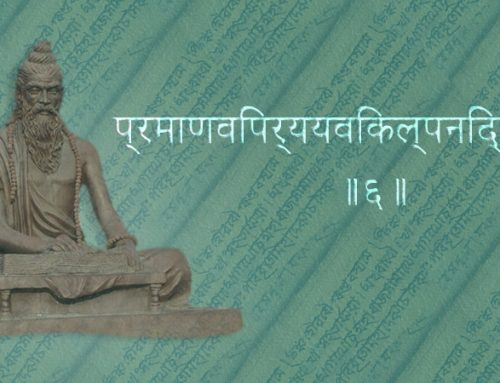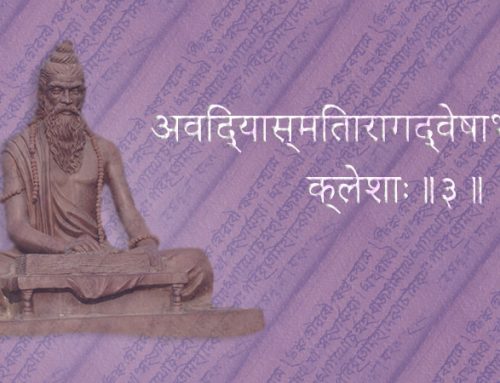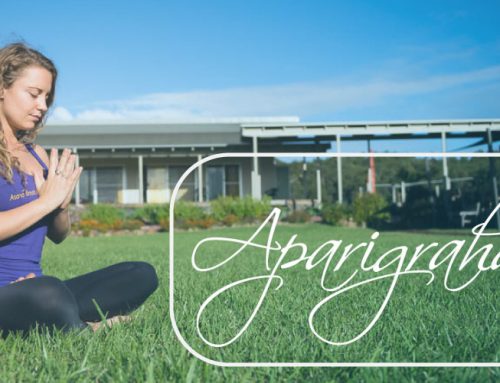
If a rose is a rose is a rose, does it follow that a pose is a pose is a pose? The myths and legends behind poses can empower us to find the inner expression and outer strength of a pose.
When practicing Virabhadrasana 2, or Warrior 2, in class one morning, my teacher John had us holding the pose for an extended period.
After talking us through the practicalities of alignment, he began to speak about shifting focus and perspective. He suggested that instead of ‘holding’ our arms at shoulder height, we extend the prana (or life force) out and away through the fingertips. There followed an effortlessness in keeping my arms raised – the only change being that I had altered my perception of the situation.
John went on to talk about the story behind the asana. Virabhadra was the powerful hero son of Shiva, the god of mystical stillness, death and destruction and symbolic of the force of change. Virabhadra was born from a lock of matted hair torn from Shiva’s own head in grief and fury at the loss of his beloved wife. Shiva ordered Virabhadra to lead Shiva’s army.
As John spoke, I was temporarily transported to another place. The one-pointed focus of my gaze was directed toward and beyond my finger tips, as if preparing to fire an arrow at a target. My back leg secured me to the earth, drawing energy and strength into my body. My navel lifting toward my spine contained my strength. John then reminded the class to ‘turn the corners of the mouth up’, as there was no better way to stand before an enemy than with a smile. I felt tension leave and a lightness enter my pose as I transcended the perceived physical limitations of the asana and moved to another realm of consciousness.
The essence of myth is the ancient unconscious source of what we think, say and do as human beings, or our base instincts. These ‘archetypes’ or patterns in our psychological makeup work to shape our perceptions and reflections of the world.
Myth, in turn, plays a role in asana practice. The root of every asana is the steady connection or seat to the earth and the symmetrical source of all standing poses is Tadasana. ‘Tada’ translates to mountain and ‘asana’ comfortable seat. The mountain is the meeting place of the terrestrial and celestial forces and the traditional abode of the Gods. It is the youngest child of heaven and earth, conducting the energy of the heavens into the earth and earth energy towards the heavens.
The base of the mountain, represented by the feet, is anchored to the earth, stabilising and balancing the body and mind. The peak of the mountain, symbolised by the crown of the head, extends towards the skies and higher awareness. The erect spine represents the vitality of the whole being thriving in the realm of gravity.
Traditionally, Tadasana is considered the first asana. We begin the cycle of practice standing straight on two feet and we finish in Savasana, the corpse pose, lying flat on our back. Every practice has a beginning and an end, the two points of which contain within a spectrum of transformation. That is the nature of our yoga practice.
There is a lifetime of work contained in the practice of Tadasana. After following instruction from your guru or teacher, you must find the pose yourself to experience its endless complexity, perceive and reflect on its essence and learn from its character as you are at any given moment in time.
So next time you draw your hands toward your heart centre in Namaskar, perhaps you can take a moment to reflect on the meaning behind this myth:
"Once God was frustrated with the constant nagging of people unsatisfied with their lot in life and complaining to God to change things to suit them. Heal this person, give wealth to that one, find a husband for this one, grant these two a child. There was always some request. He needed a break, but wherever He hid, they found him and started asking for things again. So he called together a council of the other gods and goddesses at Mount Meru, to try and solve this problem.
Shiva told him to hide on the moon; the people would never find him there. Somehow, God knew they would find him there very quickly. Vishnu suggested that he hide at the bottom of the deepest ocean. Surely no one would look there! God knew that hiding place would not last. Laughing, Sarasvati the Goddess of learning, said the answer was obvious: “Just hide inside their own hearts. They will never think to look there!”
(Source: Jivamukti Yoga by Sharon Gannon and David Life, Published by Random House 2002).



